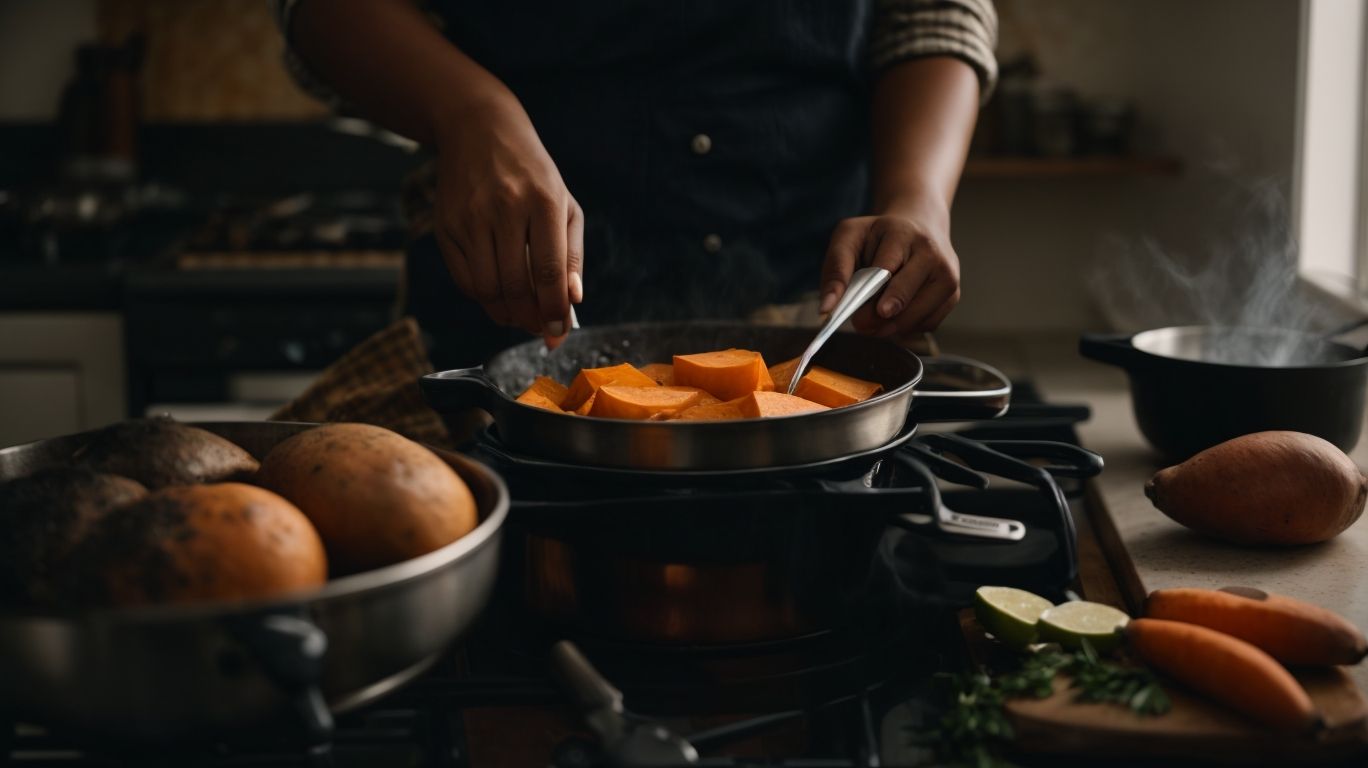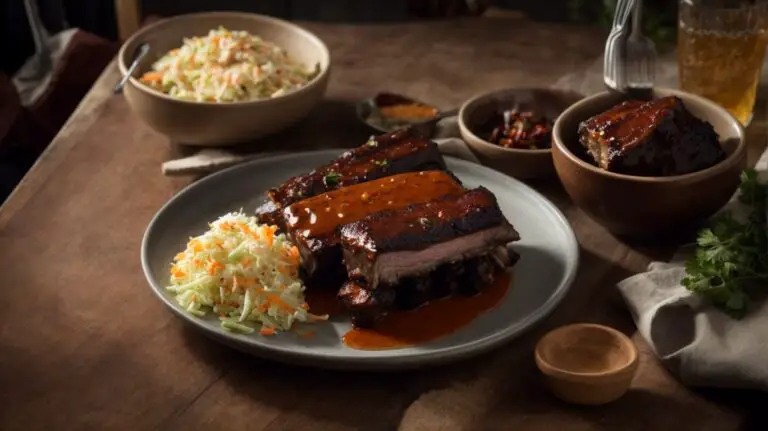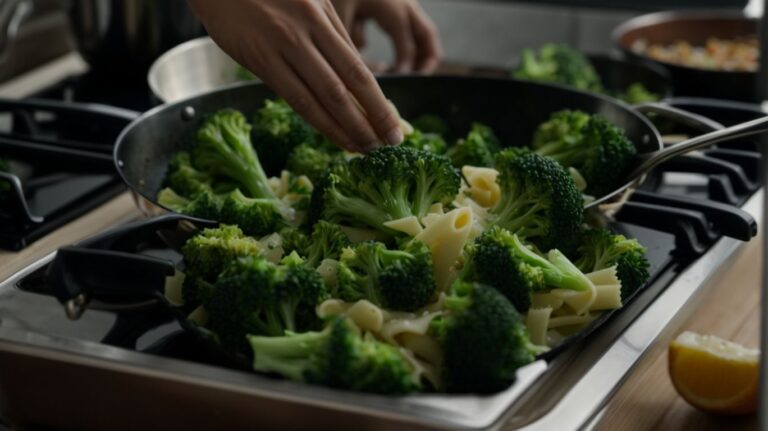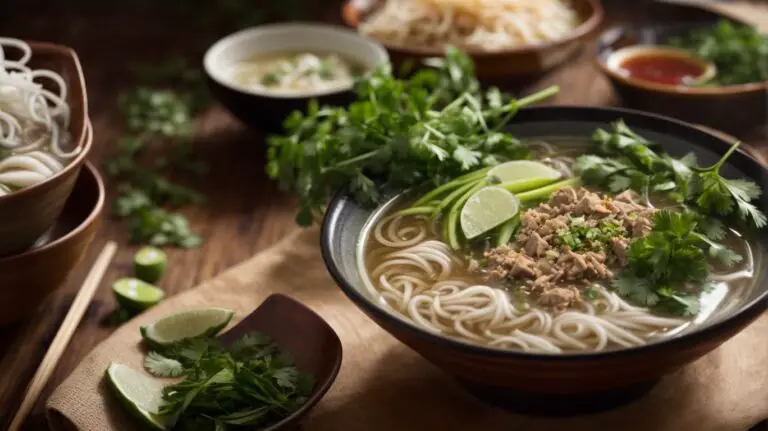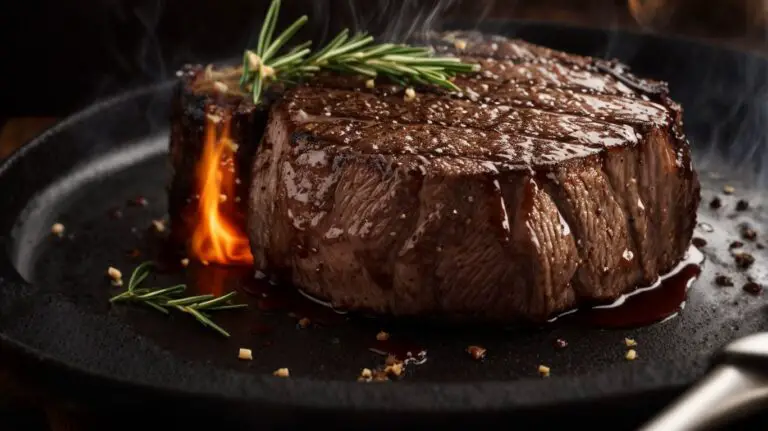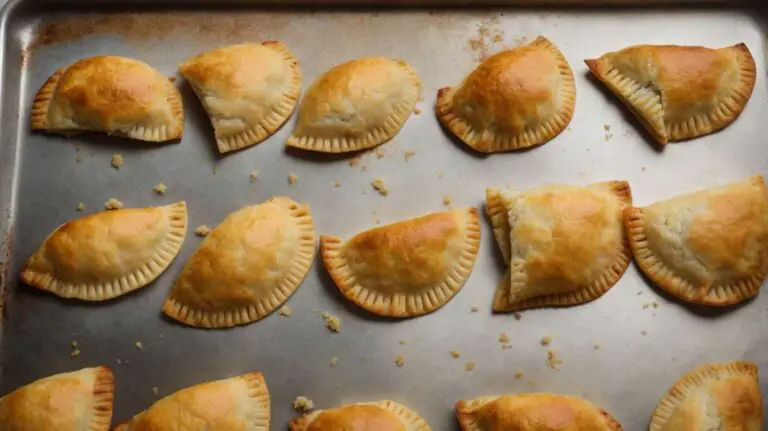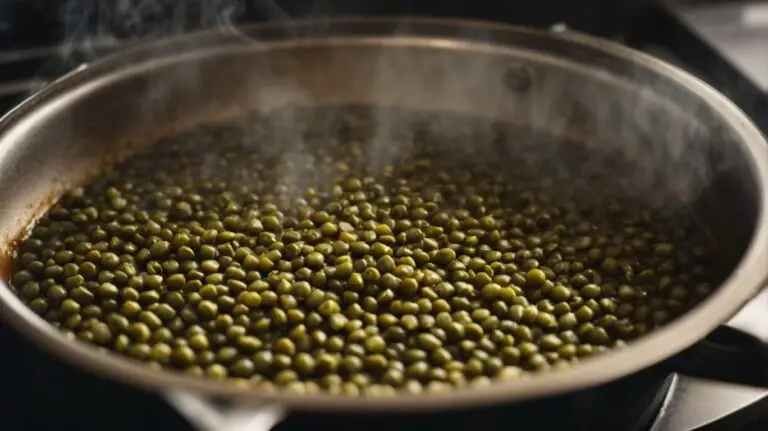How to Cook Yams on the Stove?
Have you ever wondered what yams are and how they differ from sweet potatoes?
In this article, we will explore the world of yams, including how to choose the best ones, prepare them for cooking, and cook them on the stove using various methods such as boiling, steaming, sauteing, and roasting.
We will also discuss how to flavor and season yams, as well as offer serving suggestions to help you create unique and delicious dishes.
So, grab your apron and let’s get cooking with yams!
Key Takeaways:
What Are Yams?
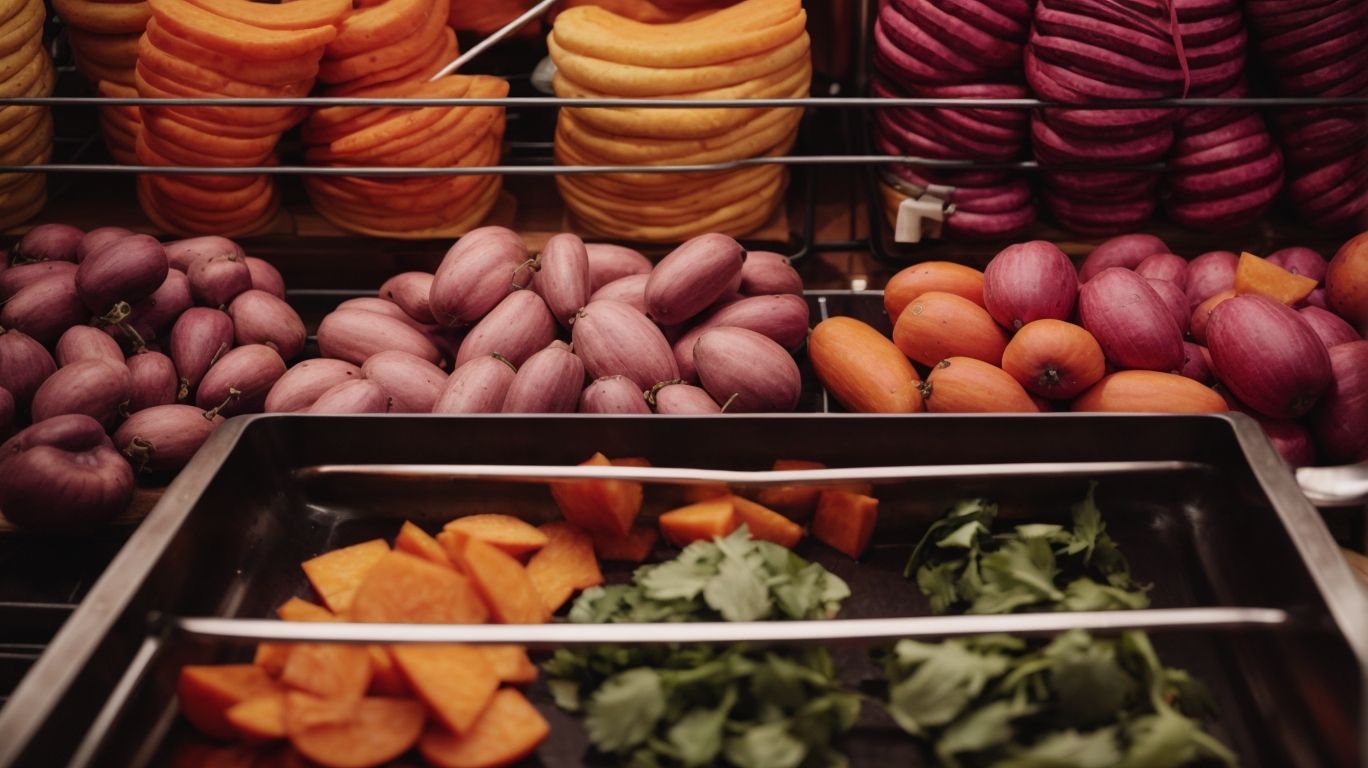
Credits: Poormet.Com – Jonathan Campbell
Yams and sweet potatoes are tuberous root vegetables that are often confused due to their similar appearance, but they belong to different plant species.
In botanical terms, sweet potatoes belong to the Convolvulaceae family, while yams are part of the Dioscoreaceae family, showcasing their distinct genetic backgrounds. Sweet potatoes have a thin, smooth skin and come in various colors like orange, white, and purple, offering a slightly sweet flavor, whereas yams have rough, bark-like skin and are starchier, with a drier texture.
In terms of culinary uses, sweet potatoes are versatile and can be enjoyed mashed, roasted, fried, or even in desserts like pies and casseroles. On the other hand, yams are often used in African, Caribbean, and Asian cuisines, providing a savory and hearty addition to stews, soups, and side dishes.
What Is the Difference Between Yams and Sweet Potatoes?
Understanding the difference between yams and sweet potatoes is essential for selecting the right ingredient in various recipes.
While both yams and sweet potatoes belong to the tuber family, they have distinct characteristics that set them apart. Yams, commonly found in Africa, Asia, and the Caribbean, have rough, dark brown skin with a starchy, dry texture. In contrast, sweet potatoes, native to the Americas, have thin, smooth skin and a moist, sweet flesh.
In terms of taste, yams have a mild flavor compared to the sweeter taste of sweet potatoes, making them versatile in savory dishes like stews and casseroles. On the nutritional front, sweet potatoes steal the spotlight with higher levels of vitamin A, vitamin C, and fiber, while yams are richer in potassium and iron.
Culinary enthusiasts appreciate how both tubers can be used in a myriad of ways – from baked and mashed dishes to fries and pies. Whether you’re in the mood for a hearty yam curry or a classic sweet potato casserole, understanding their unique attributes is key to elevating your culinary creations.
How to Choose the Right Yams?
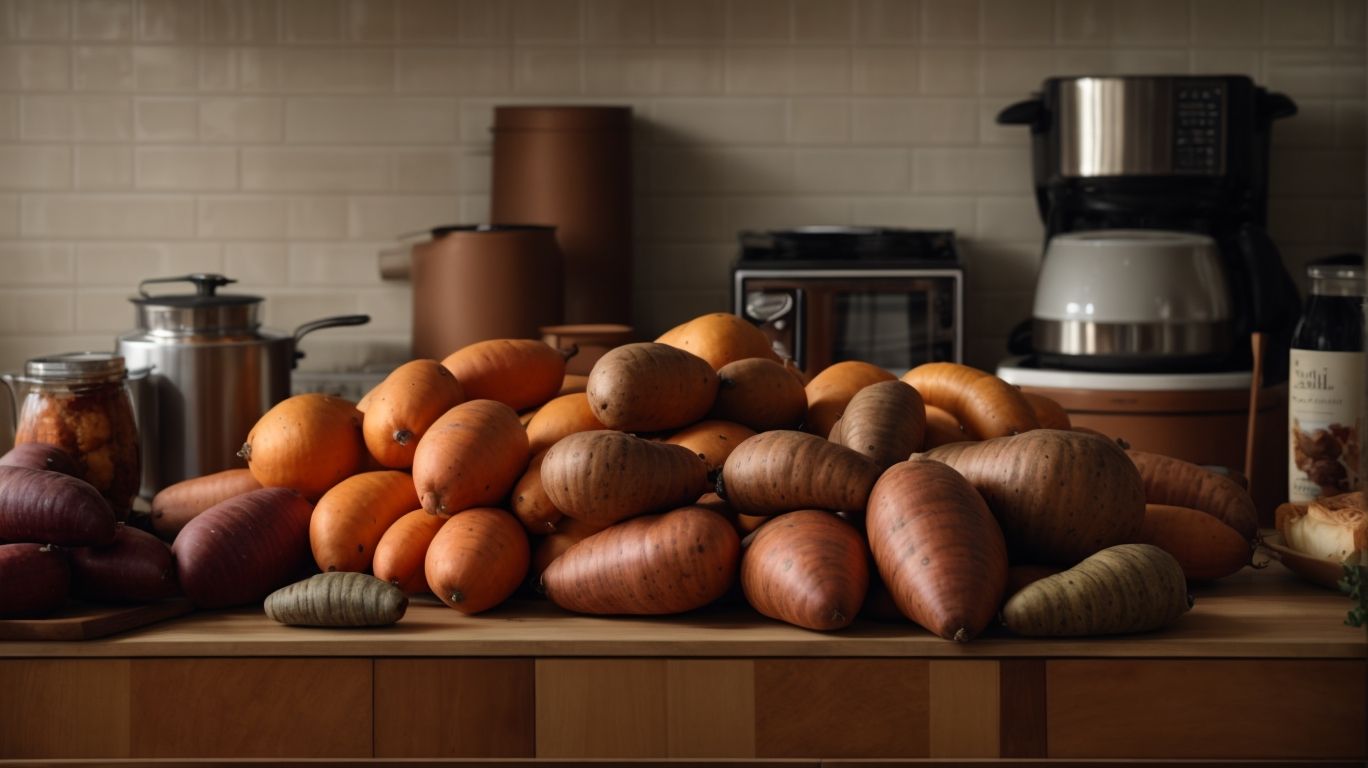
Credits: Poormet.Com – Vincent Scott
Selecting the perfect yams involves examining their appearance, texture, and firmness to ensure optimal flavor and quality in your dish.
When choosing yams, look for ones that have smooth, unblemished skin, free from cuts or bruises. The skin should be firm and vibrant in color, indicating freshness. A gentle squeeze should reveal a slightly firm texture without any soft spots, a sign of juiciness and flavor. Opt for yams that feel heavy for their size, as this suggests they are packed with moisture, contributing to their delicious taste. By paying attention to these visual and tactile cues, you can handpick the best yams for your culinary creations.
Preparing Yams for Cooking
Properly preparing yams for cooking is crucial to enhance their taste and texture, ensuring a delightful culinary experience.
One of the initial steps in preparing yams is to thoroughly wash them under running water to remove any dirt or debris. Peeling the yams with a vegetable peeler is important to discard the tough skin, revealing the vibrant flesh beneath. Once peeled, yams can be cut into desired shapes, such as cubes or wedges, depending on the recipe requirements. Careful cutting ensures even cooking and a pleasing presentation. Taking the time to prepare yams properly sets the foundation for creating flavorful and satisfying dishes.
Peeling and Cutting Yams
Peeling and cutting yams is a fundamental step that requires precision to create uniform slices for even cooking and presentation.
When peeling yams, it’s essential to use a sharp knife or vegetable peeler to efficiently remove the tough skin without wasting too much of the flesh.
- To ensure safety, always cut yams on a stable cutting board to prevent accidents.
- In terms of slicing, maintaining a consistent thickness is key for even cooking.
Hence, using a mandoline slicer can be a great tool for achieving uniform slices. It not only saves time but also ensures that all yam pieces cook at the same rate, resulting in a perfectly cooked dish with a professional touch. Remember, consistency in slicing leads to consistency in the final dish!
Soaking Yams for Better Flavor
Soaking yams before cooking can enhance their flavor and texture by removing excess starch and promoting tenderness during the cooking process.
When yams are soaked in water, the excess starch that can cause them to become gummy or stick together is released, resulting in a smoother and more pleasing texture. This process also helps to reduce the cooking time, making the yams cook more evenly. The water absorption during soaking can make yams juicier and softer, which ultimately enhances their natural sweetness and amplifies the flavor profile. Soaking yams can make them easier to digest, making it a beneficial step for those with sensitive digestive systems.
Cooking Yams on the Stove
Cooking yams on the stove offers a convenient and versatile method to prepare these flavorful root vegetables for a variety of dishes.
When cooking yams on the stove, the key is to choose the right cooking technique based on the dish you want to create. For savory dishes like stews or soups, boiling yams on medium heat can help them absorb the flavors of the broth.
- Steaming yams is ideal for retaining nutrients and texture while showcasing their natural sweetness – simply place them in a steamer basket over simmering water.
- If you prefer a crispy exterior, try pan-frying yam slices in a hot skillet with a touch of oil until they are golden and tender.
Boiling Yams
Boiling yams in simmering water is a common method that helps to soften the vegetables while preserving their natural flavors and nutrients.
When preparing yams, it’s important to choose ones that are firm and free from any blemishes. Start by peeling the yams and cutting them into chunks or slices of relatively equal sizes. For boiling, a good rule of thumb is to use about 4 cups of water for every 1 pound of yams. Place the yams in a pot with enough water to cover them completely. Bring the water to a gentle boil, then reduce the heat to a simmer. This gentle simmering is key to ensure that the yams cook thoroughly without becoming mushy or falling apart. Depending on the size of the yam pieces, they usually take around 15-20 minutes to become tender. To test for doneness, insert a fork into a yam piece; it should easily pierce through. Remember not to overcook the yams, as they can turn too soft and lose their texture and flavor.
Steaming Yams
Steaming yams is a gentle cooking method that preserves their natural sweetness and nutrients while ensuring a tender and flavorful outcome.
One of the key benefits of steaming yams is the precise control of heat, allowing them to cook evenly without scorching or drying out. This method also helps in retaining the moisture within the yams, preventing them from becoming mushy or losing their texture during the cooking process.
Steaming enhances the natural tenderness of yams, making them soft and creamy without the need for excessive fats or oils. By seasoning the yams lightly before steaming, you can infuse them with flavor while still maintaining their healthful qualities.
Sauteing Yams
Sauteing yams in a skillet with butter or oil can caramelize their natural sugars, enhancing their flavor profile with a deliciously crisp exterior.
This process of sauteing involves cooking the yams over medium-high heat until they develop a golden-brown color on the outside, creating a delightful contrast to the creamy interior.
To achieve optimal results, it’s crucial to cut the yams into evenly-sized pieces to ensure even cooking. Seasoning plays a key role in enhancing the taste – consider options like garlic powder, smoked paprika, or a pinch of cayenne pepper for a flavorful kick.
The total cooking time typically ranges between 10-15 minutes, depending on the thickness of the yam slices.
Roasting Yams
Roasting yams in the oven creates a delectable dish with caramelized edges and a tender interior, perfect for showcasing the natural sweetness of the root vegetable.
To achieve that perfect balance of textures and flavors, start by preheating your oven to 400°F. This moderate temperature allows the yams to cook evenly without burning while developing that irresistible caramelization on the outside.
In terms of seasoning, you have a variety of options to enhance the yams’ taste profile. A simple sprinkle of salt and black pepper can bring out their natural flavors, or you can get creative with rosemary, thyme, or paprika for an added depth of flavor.
Depending on the size of the yams, roast them for approximately 35-45 minutes, flipping once halfway through the cooking process to ensure an even bake. The end result should be yams with a crispy exterior and a soft, melt-in-your-mouth interior that will tantalize your taste buds.
Flavoring and Seasoning Yams
Enhancing the flavor of yams involves the art of seasoning with a blend of spices, herbs, and aromatics to elevate the taste profile of this versatile root vegetable.
In terms of spices, options like cinnamon, nutmeg, and allspice can add warm, sweet notes to yams, perfect for cozy fall dishes. For an earthy flavor, consider using cumin, paprika, or chili powder. Herbs like rosemary, thyme, and sage can infuse a subtle, fragrant taste, enhancing the overall experience. Aromatics such as garlic, ginger, and shallots bring depth and complexity to yams. Experimenting with a dash of soy sauce, balsamic glaze, or a drizzle of honey can create a delightful contrast of flavors. Whether roasted, mashed, or fried, incorporating these seasonings thoughtfully can turn a simple yam dish into a culinary masterpiece.
Adding Herbs and Spices
Incorporating a medley of herbs and spices such as cinnamon, nutmeg, and ginger can transform yams into a delectable dish bursting with warm, aromatic flavors.
When using cinnamon in yam recipes, its sweet and woody notes provide a subtle warmth that pairs beautifully with the natural sweetness of yams.
Nutmeg, on the other hand, adds a hint of nuttiness and depth, elevating the overall flavor profile of the dish. Combining these spices with a touch of ginger brings a zesty kick, balancing the sweetness and adding a refreshing element.
Whether you choose to bake, roast, or mash your yams, these spices can be incorporated in diverse ways to enhance the taste and aroma of the dish. Experimenting with different ratios and cooking methods can help you discover unique flavor combinations that suit your palate.
Using Different Cooking Oils
Choosing the right cooking oil, such as butter or olive oil, can influence the flavor and texture of yams, creating a rich and indulgent culinary experience.
In terms of yam dishes, the choice of cooking oil plays a pivotal role in not only enhancing the natural flavors of the tuber but also in determining the texture and overall cooking process. For instance, the use of butter can lend a creamy richness to mashed yams or yam puree, while olive oil can impart a distinct fruity and herbal note to roasted or baked yam dishes.
The smoking point of the cooking oil is crucial when preparing yams at high temperatures. Oils like coconut oil and avocado oil with high smoke points are ideal for frying or sautéing yams as they can withstand heat without burning, resulting in crispy yet tender yam dishes.
Serving Suggestions for Yams
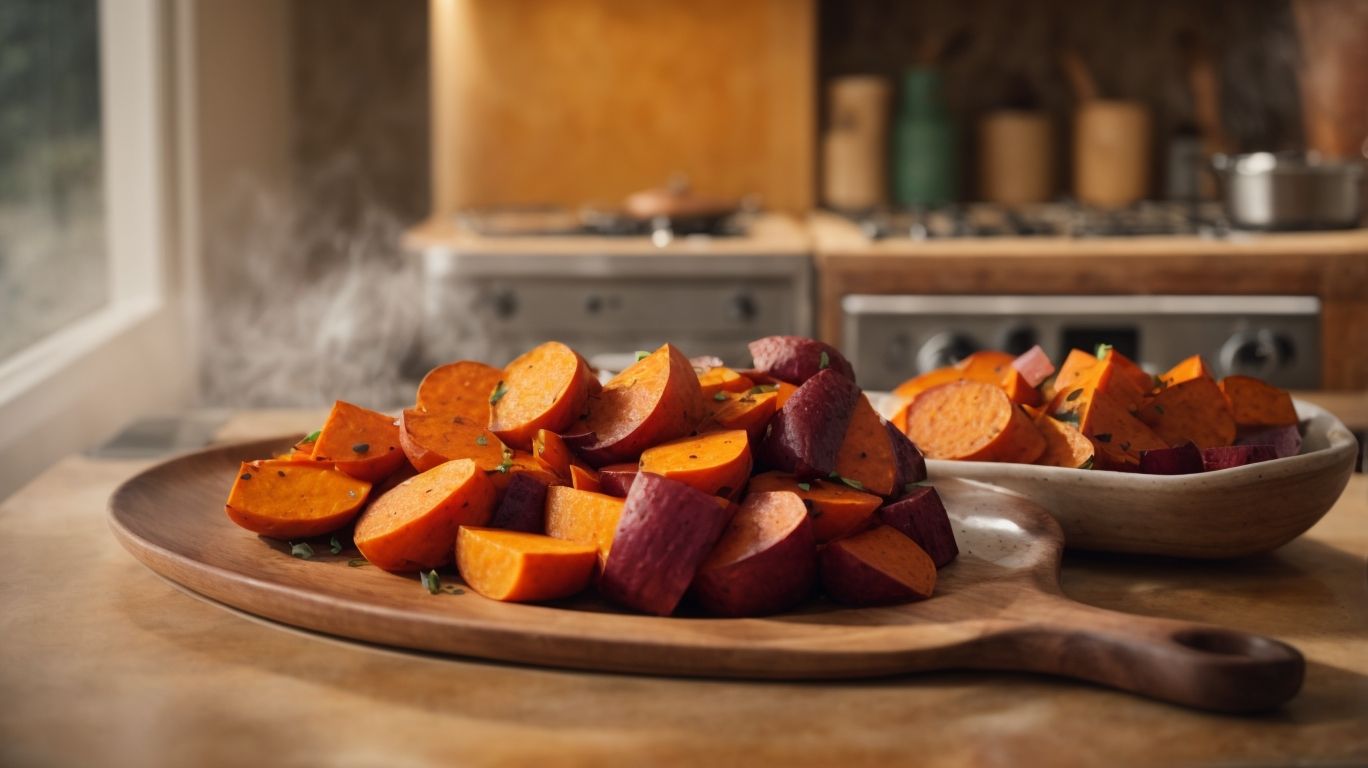
Credits: Poormet.Com – Willie Davis
Yams can be served in various ways, from classic holiday side dishes to innovative recipes that showcase the vegetable’s unique flavors and textures.
For a simple and comforting side dish, try roasting yams with a drizzle of olive oil, sprinkle of sea salt, and a dash of cinnamon for a touch of sweetness. Alternatively, yams can be mashed and seasoned with herbs like thyme or rosemary for a flavorful twist on traditional mashed potatoes. Pairing yams with savory ingredients like bacon, sage, or caramelized onions can bring out their natural sweetness.
Pairing Yams with Different Dishes
Pairing yams with savory dishes like roasted meats or incorporating them into traditional Southern recipes can create a harmonious balance of flavors and textures.
Yams, with their natural sweetness and earthy undertones, lend themselves well to a variety of culinary pairings. When roasted alongside succulent meats, the caramelization of the yams adds a delightful contrast to the savory flavors, elevating the dish to a new level of complexity. In traditional Southern cuisine, yams often find their way into soul-warming dishes, such as candied yams or sweet potato pie, where their rich flavor shines through. Exploring the versatility of yams in global cuisines reveals how different regions have incorporated these tubers into their culinary traditions.
Creating Unique Yams Recipes
Experimenting with innovative yam recipes that feature unexpected ingredients or cooking techniques can unlock new culinary possibilities and gastronomic delights.
Yams, with their starchy texture and sweet flavor, serve as a blank canvas for a multitude of flavors. From savory dishes like yam and chorizo tacos to sweet treats such as yam and coconut pancakes, the possibilities are endless.
Pairing yams with spices like cumin and paprika or ingredients like coconut milk and ginger can elevate the humble tuber into a gourmet masterpiece.
Whether roasted, mashed, fried, or pureed, yams can adapt to various cooking methods, allowing for experimentation and innovation in the kitchen.
So, next time you’re at the market, pick up some yams and let your culinary creativity soar!
Frequently Asked Questions
What are the basic steps to cook yams on the stove?
To cook yams on the stove, start by washing and peeling the yams. Then, cut them into small pieces and place them in a pot with enough water to cover them. Bring the water to a boil and let the yams cook for about 15-20 minutes until they are tender. Drain the water and serve the yams as desired.
What type of pot should I use to cook yams on the stove?
It is best to use a pot with a heavy bottom, such as a dutch oven or a stockpot, to cook yams on the stove. This type of pot will distribute heat evenly and prevent the yams from burning or sticking to the bottom.
Do I need to add any seasoning to the yams while cooking?
No, you do not need to add any seasoning to the yams while cooking. Yams have a naturally sweet and earthy flavor that does not require any additional seasoning. However, you can add a pinch of salt or any other preferred seasoning if desired.
Can I cook yams on a gas stove or an electric stove?
Yes, you can cook yams on both gas and electric stoves. Just make sure to adjust the heat accordingly to prevent the yams from burning.
How long does it take to cook yams on the stove?
The cooking time for yams on the stove can vary depending on the size and type of yams. On average, it takes about 15-20 minutes for the yams to become tender and fully cooked. You can test for doneness by piercing the yams with a fork, and if it goes in easily, they are ready to be served.
Can I store leftover cooked yams in the fridge?
Yes, you can store leftover cooked yams in the fridge for 3-4 days. Make sure to let them cool down completely before storing them in an airtight container. When ready to eat, reheat the yams on the stove or in the microwave until warm.

